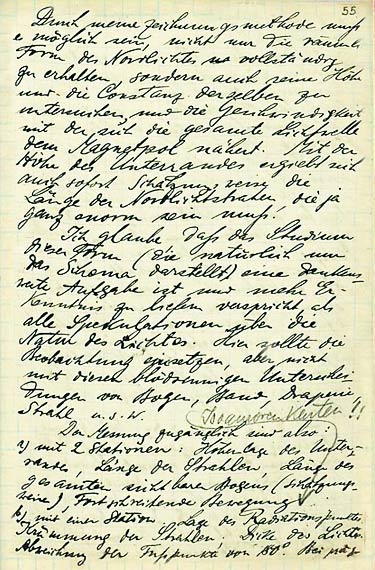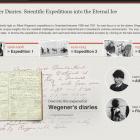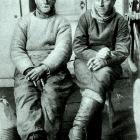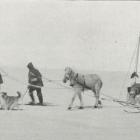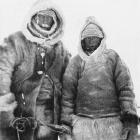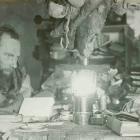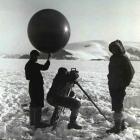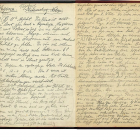NL001-004_055
Source: Alfred Wegener, Tagebücher, June 1906 – August 1908. DMA NL 001/004.
[055] Durch meine Zeichnungsmethode muß es möglich sein, nicht nur die räumliche Form des Nordlichts vollständig zu erhalten, sondern auch seine Höhe und die Constanz derselben zu untersuchen, und die Geschwindigkeit mit der sich die gesamte Lichtquelle dem Magnetpol nähert. Mit der Höhe des Unterstandes ergiebt sich auch sofort schätzungsweise die Länge der Nordlichtstrahlen, die ja ganz enorm sein muß! Ich glaube, daß das Studium dieser Form (die natürlich nur das Schema darstellt) eine dankenswerte Aufgabe ist und mehr Erkenntnis zu liefern verspricht, als alle Spekulationen über die Natur des Lichtes. Hier sollte die Beobachtung einsetzen, aber nicht mit diesen blödsinnigen Unterscheidungen von Bogen, Band, Draperie, Strahl usw.
Die Messung zusätzlich sind also:
a) Mit 2 Stationen: Höhenlage des Unterrandes, Länge der Strahlen, Länge des gesamten sichtbaren Bogens, (schätzungsweise), Fortschreitende Bewegung, Iso-Karten!!
b) Mit einer Station. Lage des Radiationspunktes, Krümmung der Strahlen; Dicke des Lichtes. Abweichung der Fußpunkte von 10°. Bei präg-
[055] Using my graph method, it should be possible not only to obtain the spatial form of the northern lights, but also to investigate their height and stability, and to determine the speed at which the entire source of light moves towards the magnetic pole. The height of the dome would also immediately provide an estimate of the length of the northern light rays, which must be enormous! I believe that the study of this form (which naturally only represents the general pattern) is a very rewarding task, which promises to deliver more insight than all the speculation about the nature of the light. This is where observation should begin, but not with these idiotic distinctions between curves, lines, drapery, rays etc.
The measurements are, therefore:
a) With 2 stations: altitude of the lower edge, length of the rays, length of the entire visible curve (estimated), gradual movement, Iso-aurora maps!!
b) With one station: position of the radiation point, curvature of the rays; thickness of the light. Deviance of the foot points from 10°. In the case of
